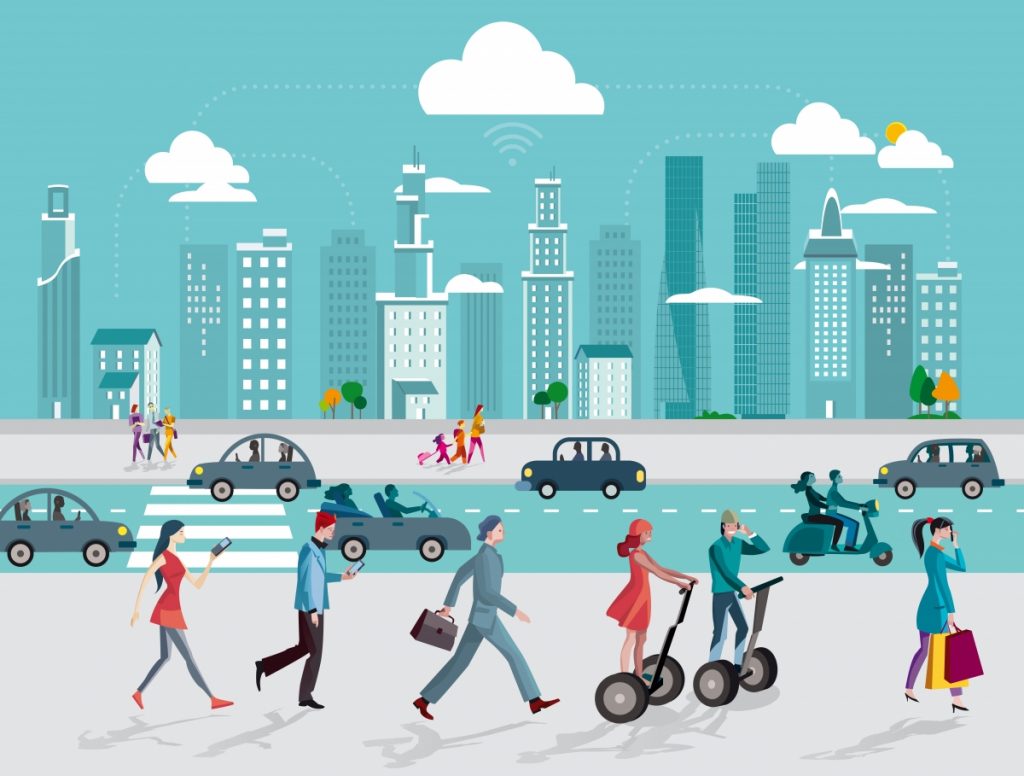

How Technology is Enhancing Urban Mobility
The world is witnessing an unprecedented rate of urbanization, with millions of people moving to cities every year. This rapid growth has put immense pressure on urban infrastructure, leading to congestion, pollution, and reduced quality of life for citizens. However, with the advent of technology, urban mobility is undergoing a significant transformation, making cities more livable, sustainable, and efficient. This article explores how technology is enhancing urban mobility, improving the daily commute, and creating smarter cities.
Smart Traffic Management
One of the primary concerns in urban areas is traffic congestion, which leads to wasted time, fuel, and increased air pollution. Technology has come to the rescue with intelligent traffic management systems that optimize traffic flow, reduce congestion, and minimize travel times. These systems use real-time data from sensors, cameras, and GPS to monitor traffic conditions, detect anomalies, and respond accordingly.
For instance, smart traffic lights can adjust their timings based on traffic volume, pedestrian traffic, and emergency vehicle priority. This dynamic approach ensures smoother traffic flow, reduces congestion, and minimizes the risk of accidents. Additionally, traffic management centers can analyze data to identify bottlenecks and implement corrective measures, such as adjusting traffic signal timings or redirecting traffic.
Intelligent Public Transit
Public transportation is the backbone of urban mobility, but traditional bus and train systems often struggle to meet the demands of growing cities. Technology is revolutionizing public transit by making it more efficient, convenient, and appealing to citizens.
Intelligent transportation systems (ITS) use real-time data to optimize bus and train schedules, routes, and frequencies. This ensures that public transit vehicles arrive on time, reducing wait times and increasing the overall efficiency of the system. Additionally, passengers can access real-time information through mobile apps, digital signage, or SMS, making it easier to plan their journeys.
Mobility-as-a-Service (MaaS)
MaaS is a subscription-based model that integrates public, private, and shared transportation services into a single platform. Users can access a range of transportation options, including buses, trains, bike-sharing, and car-sharing services, through a single mobile app. This platform encourages users to adopt more sustainable transportation modes, reducing reliance on private vehicles and decreasing congestion.
MaaS also provides a more personalized travel experience, as users can plan their journeys according to their preferences, budget, and time constraints. The platform uses data analytics to optimize routes, schedules, and pricing, making urban mobility more efficient, convenient, and affordable.
Electric and Autonomous Vehicles
Electric vehicles (EVs) are gaining popularity as a sustainable alternative to traditional fossil-fuel-powered vehicles. EVs reduce greenhouse gas emissions, noise pollution, and operating costs, making them an attractive option for urban dwellers. Governments and companies are investing heavily in EV infrastructure, including charging stations and battery-swapping facilities.
Autonomous vehicles (AVs) are another game-changer in urban mobility. AVs can improve road safety, reduce traffic congestion, and enhance mobility for the elderly and disabled. Autonomous buses and shuttles are already being tested in several cities, with promising results.
Mobility Analytics and Data-Driven Decision Making
The proliferation of sensors, cameras, and GPS technology has generated a massive amount of data related to urban mobility. This data can be leveraged to gain insights into travel patterns, traffic behavior, and transportation demand. Mobility analytics platforms use machine learning and artificial intelligence to process this data, providing valuable insights for urban planners, policymakers, and transportation operators.
Data-driven decision making enables cities to:
- Identify areas of congestion and implement targeted solutions.
- Optimize public transit routes and schedules based on demand.
- Develop data-driven policies for transportation infrastructure development.
- Enhance the overall efficiency and sustainability of urban mobility systems.
The Rise of Micromobility
Micromobility, which includes bike-sharing, scooter-sharing, and skateboarding, has become a popular mode of transportation in many cities. These lightweight, affordable, and environmentally friendly options cater to short-distance commutes, reducing reliance on private vehicles and promoting active transportation.
Technology has enabled the growth of micromobility by providing convenient and secure payment systems, GPS tracking, and user-friendly apps. Real-time data analysis helps operators to optimize fleet distribution, ensuring that vehicles are available when and where they are needed.
Challenges and Opportunities
While technology is transforming urban mobility, there are challenges and concerns that need to be addressed:
- Data privacy and security: The collection and analysis of mobility data raise concerns about privacy and security. Cities must ensure that data is protected and used responsibly.
- Infrastructure and funding: Implementing smart transportation systems requires significant investment in infrastructure, funding, and maintenance.
- Accessibility and equity: New mobility options should be accessible and affordable for all citizens, regardless of age, ability, or socioeconomic status.
- Regulation and policy: Cities need to develop policies and regulations that balance innovation with safety, security, and environmental concerns.
In conclusion, technology is revolutionizing urban mobility, making cities more livable, sustainable, and efficient. By leveraging data analytics, smart traffic management, intelligent public transit, MaaS, electric and autonomous vehicles, and micromobility, cities can create a seamless, convenient, and environmentally friendly transportation experience. However, it is essential to address the challenges and concerns associated with these technologies to ensure that urban mobility systems are equitable, accessible, and beneficial for all citizens.




